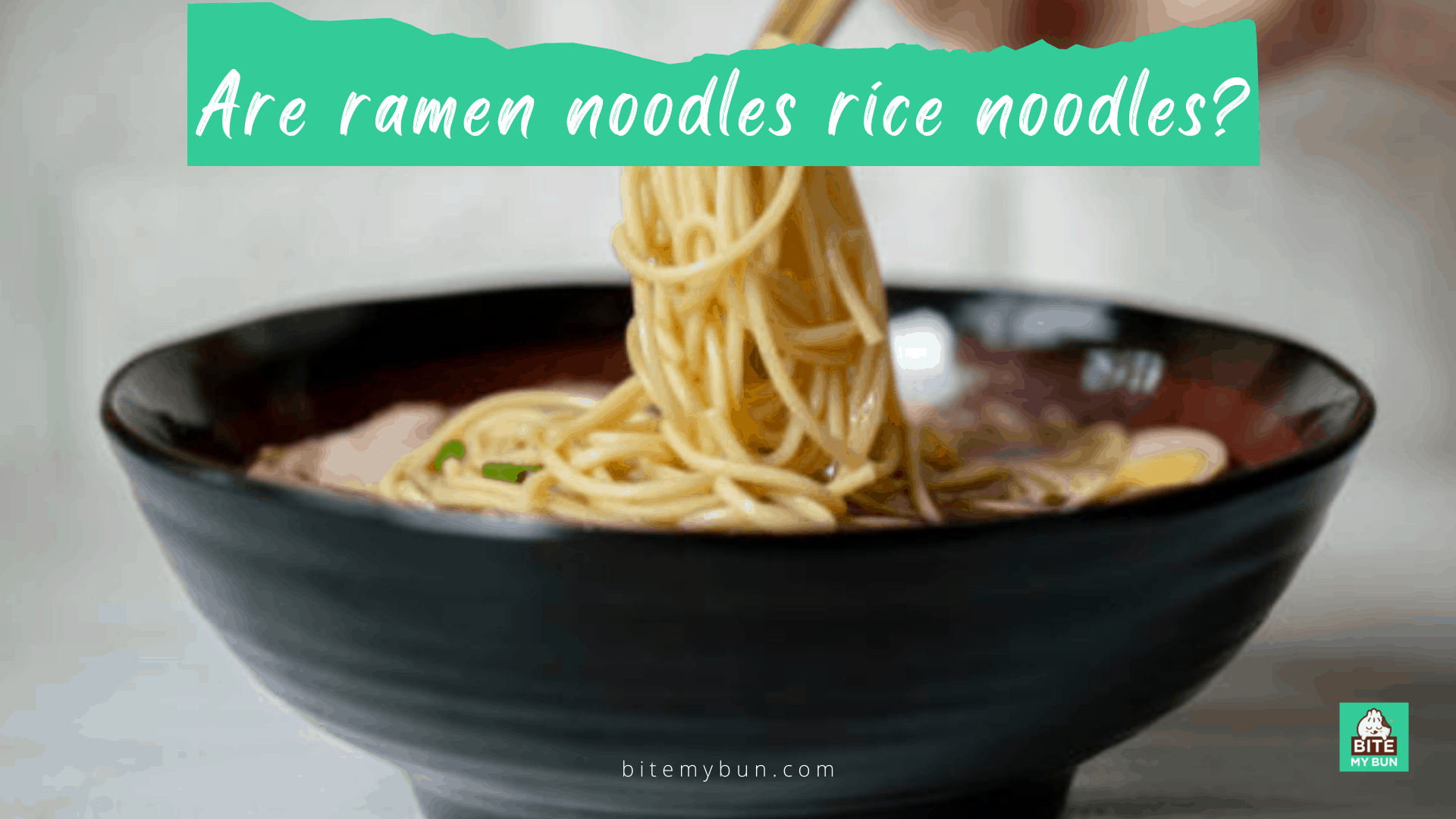Are ramen noodles rice noodles? How ramen are made
What makes ramen noodles unique is their firm texture and iconic yellow color. It is one of the reasons why eating ramen is a great experience.
Based on the customer’s preference, the ramen chef can make the noodles thicker or thinner. With this in mind, new eaters often mistake ramen noodles for rice noodles.

Ramen noodles are made out of wheat flour, water, salt, and “kansui”. You can use rice noodles for ramen if you like it gluten-free or if you don’t have alternative ingredients in your pantry.
In practice, rice noodles are better used on stir fry recipes than recipes with hot broth to avoid sogginess.

Check out our new cookbook
Bitemybun's family recipes with complete meal planner and recipe guide.
Try it out for free with Kindle Unlimited:
Read for freeIn this post we'll cover:
How are ramen noodles made?
There is no doubt that ramen noodles are one of the most popular noodle variants in Japan. Originally from China, the noodles are yellow and have a firm texture.
It is also a slippery type of noodle, perfect for slurping without missing out on the flavor. Most ramen shops make their noodles to ensure excellent quality in their products.
Real ramen noodles
Just like other noodles or pasta variants, making ramen noodles by hand is extremely tedious. The process is quite easy, but it’s tough when you’re using your hands only to knead the noodles.
If you have a pasta maker, or even a special ramen machine at home, you can use it to help with gluten formation.
Creating ramen noodles at home is possible, even if you don’t have a pasta or ramen maker. You will only need three ingredients for your ramen noodles: wheat flour, salt, and kansui.
Kansui is a kind of alkaline water added to make the noodles firm and appear pale yellow. Some home cooks use bread flour instead of wheat flour to make the result chewer.
Mix the wheat flour, water, kansui, and salt to form a dough. A ramen chef will traditionally roll and pull the dough to get the noodles thinner and make it into a serveable form.
Home cooks can use pasta makers instead to complete the job easier. Some traditional cooks use a hand-cracked device to make the rolling and pulling of dough easier.
Like other noodles and pasta out there, ramen noodles are better served freshly made. It needs to be dried if you want to cook it later or if you want to keep it for the long term.
Also read: Rice or Noodles: which is healthier? Carbs, calories & more
Instant ramen noodles
Just like real ramen noodles, the instant ones found on ramen packs like Maruchan and Nissin also use the method mentioned above.
The big difference in method, however, is the heavy usage of machinery and automation, which is also what makes instant ramen so cheap.
An automated machine will mix, knead, and roll the though until it’s ready. After that, the process of cooking freshly-made noodles is next.
When cooked, these noodles are portioned and fried in palm oil. The frying helps in making the noodles last longer.
After this step, the fried noodles are dehydrated and packed into noodle cups or packaging. Unfortunately, these process sometimes trades freshness and flavor for longer shelf life.
How about rice noodles?
The Japanese rice noodles are made with rice flour instead of wheat. Because of the rice flour, the final product will always look extremely white and more transparent.
Rice noodles are great for cooking noodly stir fry due to their softness and appealing color. This noodle type is also quick to cook due to its softness.
Conclusion
In theory, you can use rice noodles for your ramen if there are no other ramen alternatives available for you. These noodles will cook in hot water by just soaking for three minutes.
However, note that these noodles might not withstand hot broth and might become soggy after a few minutes.
Also check out my list of the 9 best ramen toppings to order or use when making ramen at home
Check out our new cookbook
Bitemybun's family recipes with complete meal planner and recipe guide.
Try it out for free with Kindle Unlimited:
Read for freeJoost Nusselder, the founder of Bite My Bun is a content marketer, dad and loves trying out new food with Japanese food at the heart of his passion, and together with his team he's been creating in-depth blog articles since 2016 to help loyal readers with recipes and cooking tips.
